I tried the Xiaomi Mix Fold 3 – Samsung Z Fold 5 has nothing to worry about... yet
The slender Xiaomi Mix Fold 3 bests the Galaxy Z Fold 5 in key areas – but Samsung's still top dog in the West


The Mix Fold 3 is the latest folding phone from Xiaomi, a rising star in the phone world with recent hits including the camera-tastic Xiaomi 13 Ultra and 13 Pro. Being a foldable phone, though, it isn't quite as camera-focused as the 13 series. Instead, its raison d'être is to be a dual-screened powerhouse, poised to take on Samsung and its recently announced Galaxy Z Fold 5.
The Xiaomi Mix Fold 3 has a lot going for it on paper, especially when compared to the Z Fold 5. It's a very thin foldable (at just 5.26mm unfolded), is incredibly powerful, and its quad-camera system is also best-in-class on paper, with its five times zoom range – mighty even by non-folding phone standards.
And yet the Xiaomi Mix Fold 3 isn't going to knock Samsung off its top spot on the foldable charts. This is mainly because it probably won't launch outside China, though for all its highlights, there are also some other key areas the Z Fold 5 pulls ahead.
1. Thinner thinner, chicken dinner
Available in a Xiaomi composite fibre version with a Kevlar-style patterning, or a glass variant – the latter available in black or gold – it was the latter I tested out, as you can see from the glass-finish pictures throughout this piece.
While the Honor Magic V2 is still the thinnest foldable out now (at 9.9mm when closed), Xiaomi isn't far behind, with the Mix Fold 3 in carbon fibre measuring 10.86mm, and the glass option measuring 10.96mm.
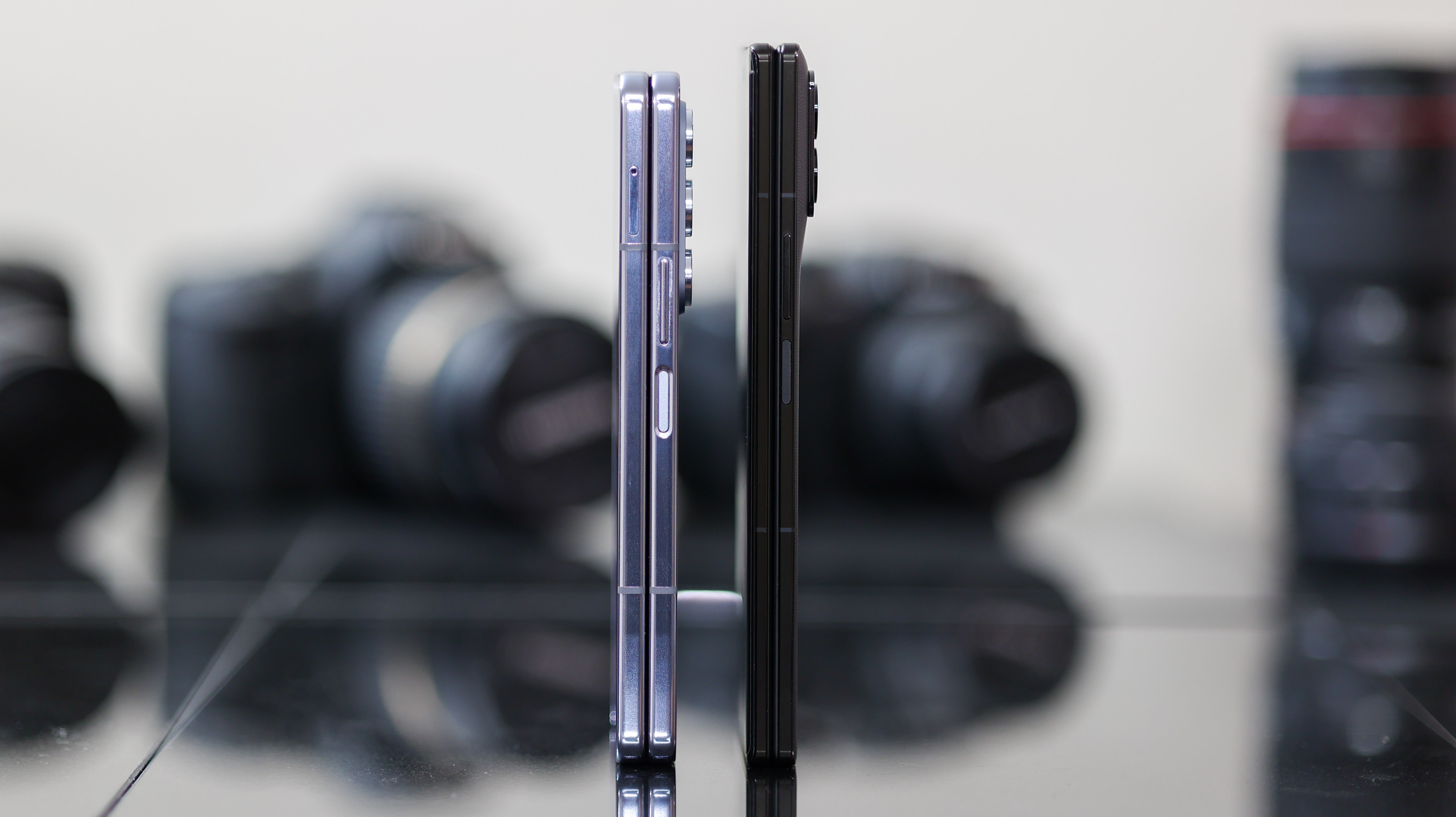
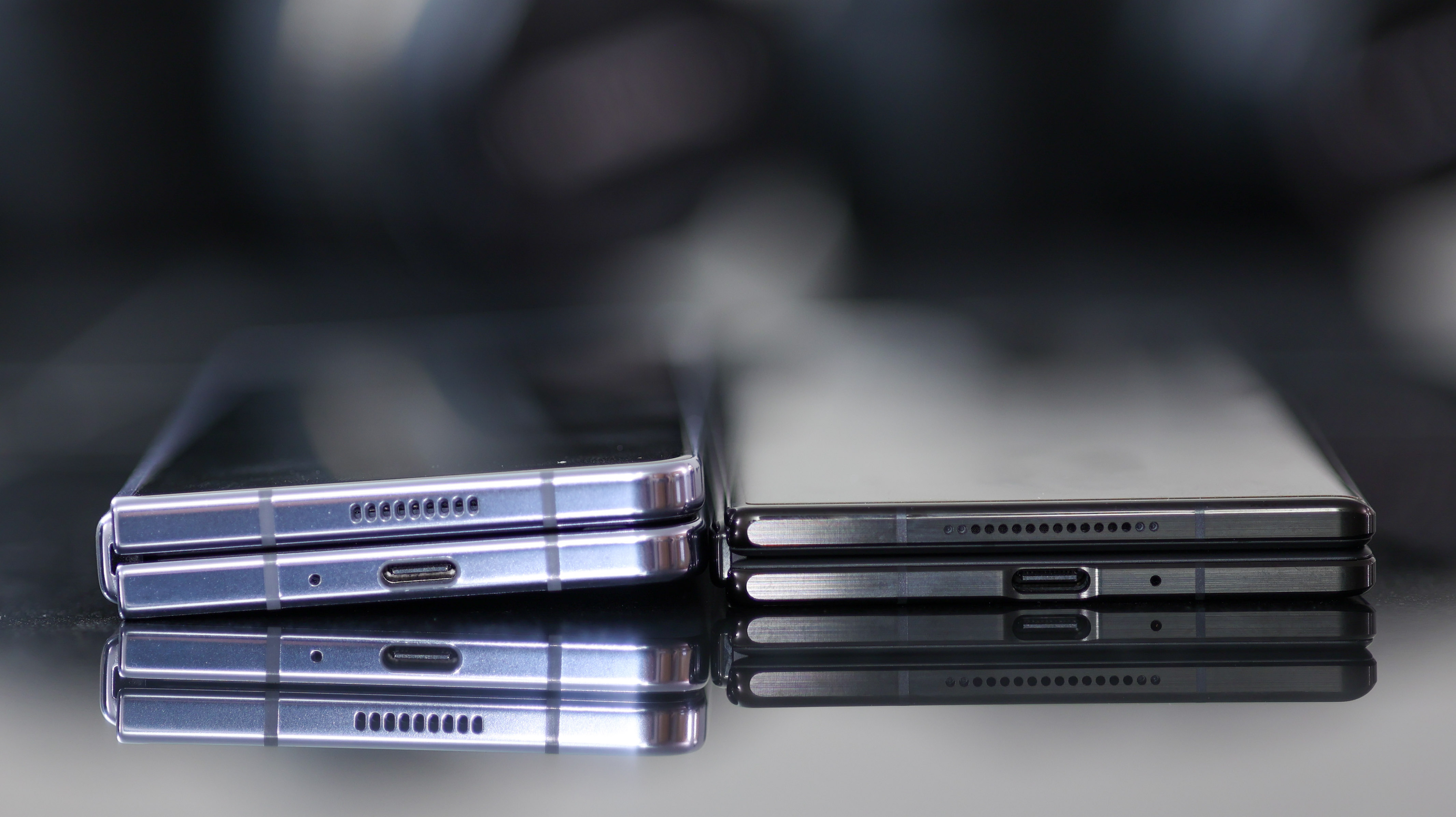

Set against the Galaxy Z Fold 5 (which is a chunkier 13.4mm) the Mix Fold 3 feels very slimline and comfortable to use thanks to tapered edges. Xiaomi does pull some typical smartphone-maker trickery, though, with its measurements not taking the camera bump into consideration. As you can see in the image above, at their thickest points, the two phones are actually very comparable – but the hand-feel definitely gives Xiaomi the edge.
With its tapered matte finish, Xiaomi's foldable is also easier to grip than Samsung's polished metal Z Fold 5, and the extra space between the layers along the opening side means it's less cumbersome to open out too.
Get all the latest news, reviews, deals and buying guides on gorgeous tech, home and active products from the T3 experts
Ultimately, from a design standpoint, there really is no doubt that I'd rather have a Xiaomi Mix Fold 3 in hand than a Galaxy Z Fold 5 – though that's also down to both phone's respective screens...
2. Screen queen
If you've used any Samsung Galaxy Z Fold phones, you'll know that the front screen is one cramped affair. When I tested the Fold 5, typos owing to the cover screen's narrow keyboard and my chunky thumbs constantly forced me to open it up for long bouts of messaging.
That said, T3's Tech Editor, Mike Lowe, found a key competitor, the Google Pixel Fold, to have a screen too 'normal' and large that it often negated the point in having a foldable phone. No one maker seems to have it quite right for everyone just yet.
Xiaomi has managed to squeeze two of the largest screens we've ever seen on a foldable into the Mix Fold 3, with the outer screen being 6.56-inches on the diagonal, while the inner screen measures a massive 8.03-inches across.
Talking about size in inches doesn't share the whole story, though. The two cover screens' narrowness is the reason I appreciate the Mix Fold 3 so much. Its screen measures 66mm wide, while the Z Fold 5's measures 57mm. These numbers might sound modest enough, but it's the difference between comfortable and cramped typing for me.

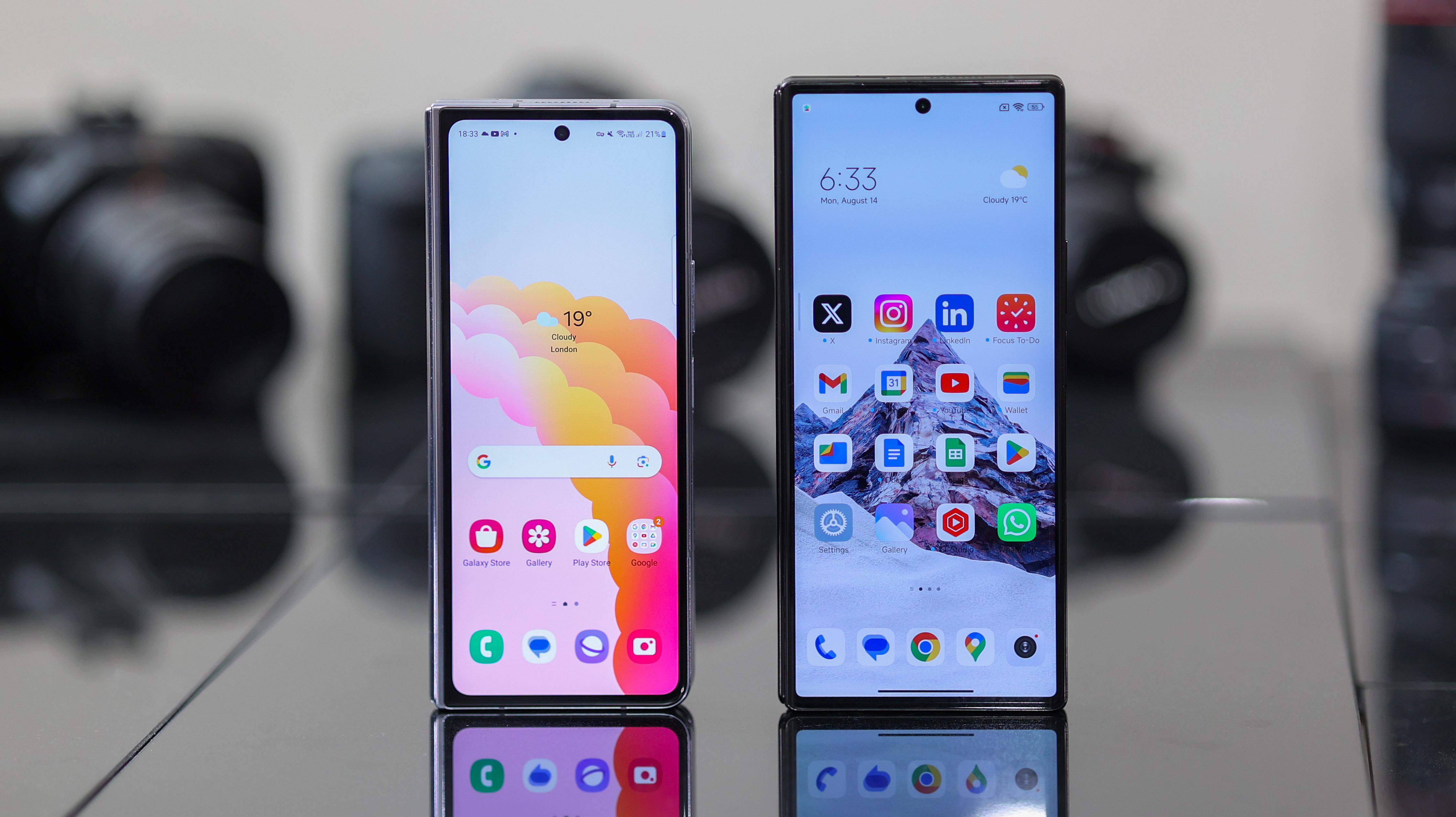
It's also worth looking at the inner screens. The Galaxy Z Fold 5's glorious unfolded AMOLED screen is a large 7.6-inches, while the Mix Fold 3's is a significantly larger 8.03-inches.
Considering both phones are similar in weight, Xiaomi's hardware seriously trounces Samsung when it comes to screen bang for buck, with a much more expansive, tablet-like unfolded experience.
There's also a much less visible crease on the Mix Fold 3 than the Galaxy Z Fold 5, so it doesn't pull you out of the tablet illusion every time you run your fingers across the centre when using it unfolded.
3. What's not to Leica?
Xiaomi also impresses on the camera front. Since partnering with Leica, its phones have consistently been some of the best around for photography, and the Mix Fold 3 combines four cameras for some mighty imaging credentials.
Xiaomi leads with a 50-megapixel sensor (the Sony IMX800) with optical stabilisation (OIS) – very comparable to the Galaxy Z Fold 5's main camera – and the two phones' ultra-wides are well-matched too, sporting 12MP resolution. Zooming is where the Mix Fold 3 edges ahead, though, with not one but two telephoto cameras.
Both Samsung and Xiaomi's phones shoot with a roughly 3x zoom lens matched with 10MP resolution sensors. But Xiaomi goes one further, adding a 5x zoom periscope camera to the mix, giving it Google Pixel Fold optical reach.
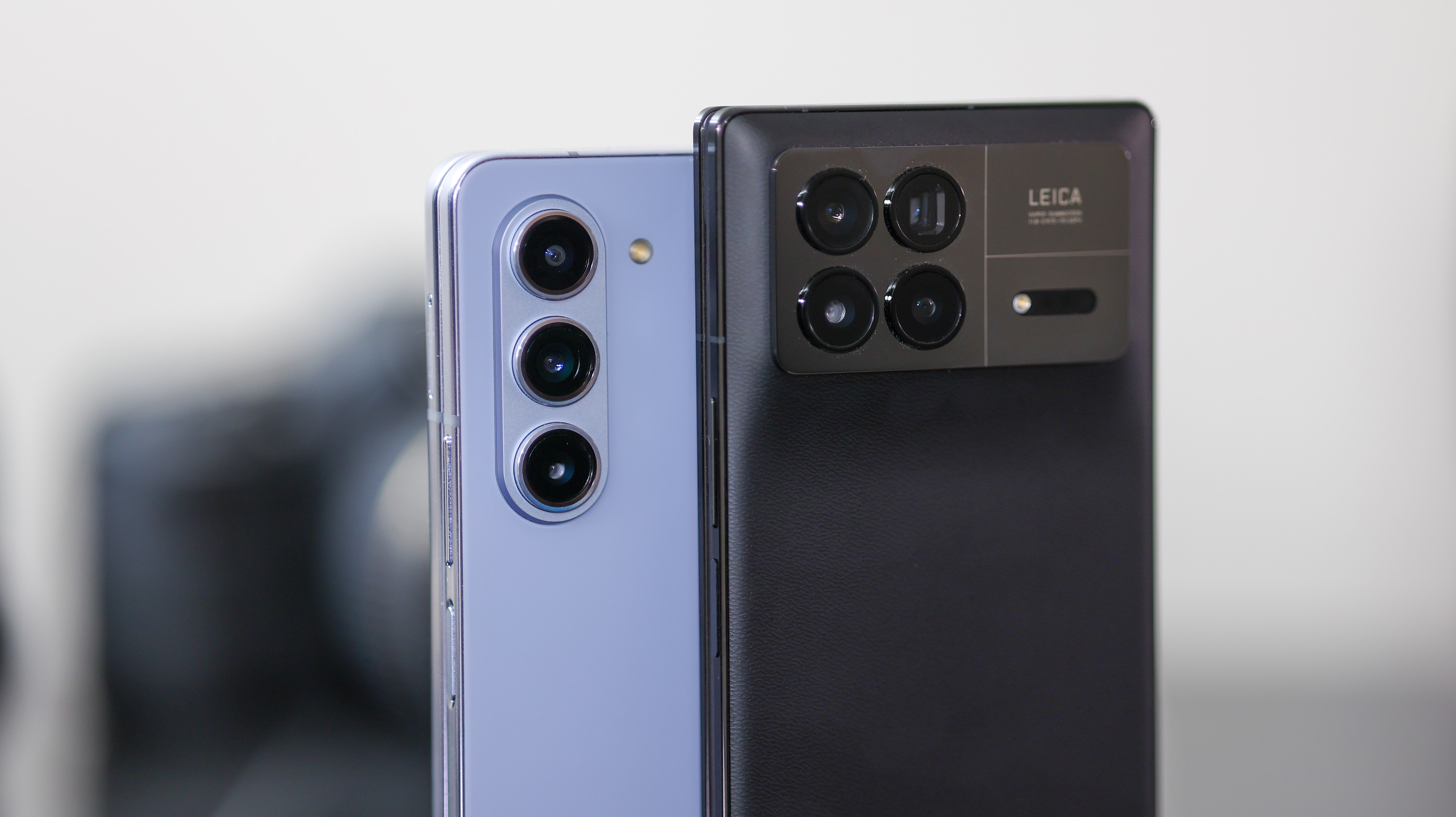
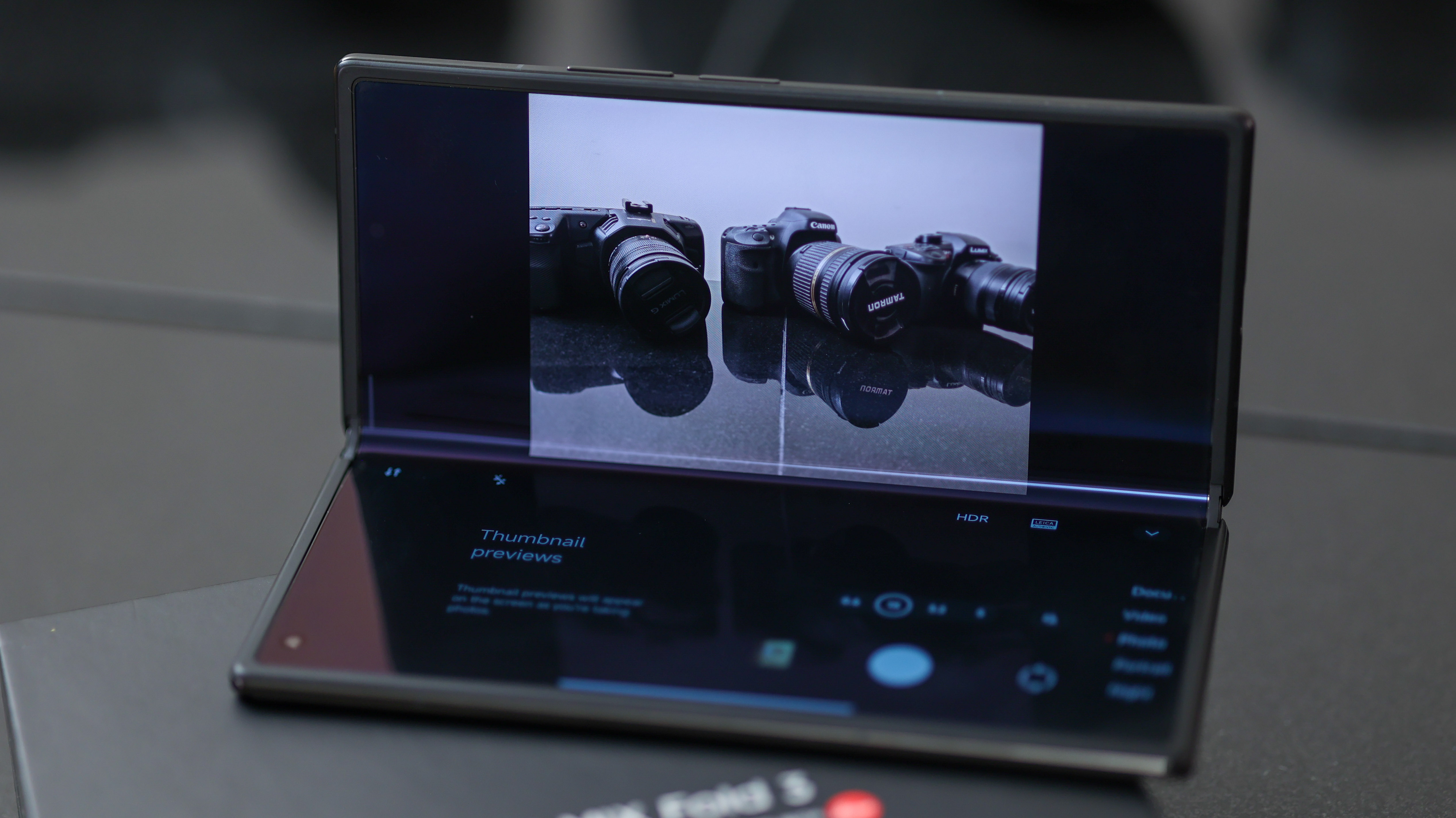
The Mix Fold 3's more versatile camera system is also coupled with Xiaomi and Leica's photo processing, which is typically more subdued and realistic than Samsung's punchier take.
On first impression, this is the final nail in the camera coffin, giving the Mix Fold 3 the edge over the Z Fold 5 in my very early tests. Although it is also about preference.
Xiaomi also includes a kickstand cover in the box with the phone – a great addition and a welcome one given the price of foldables.
4. Samsung's still got it
Despite all its highlights, though, Xiaomi's stunning new Mix Fold 3 isn't a winner across the board. In addition to the fact it may never hit UK or US shores officially, its software optimisation falls behind Samsung's Galaxy Z Fold 5.
When you open up the Z Fold 5, a handy taskbar gives you quick access to frequently used apps, as well as both floating window and split-screen multi-tasking. It makes darting across apps a breeze, and works brilliantly on book-style folding phones. Unfortunately for Xiaomi, this hasn't been added to its Mix Fold line, putting its interface on the back foot.
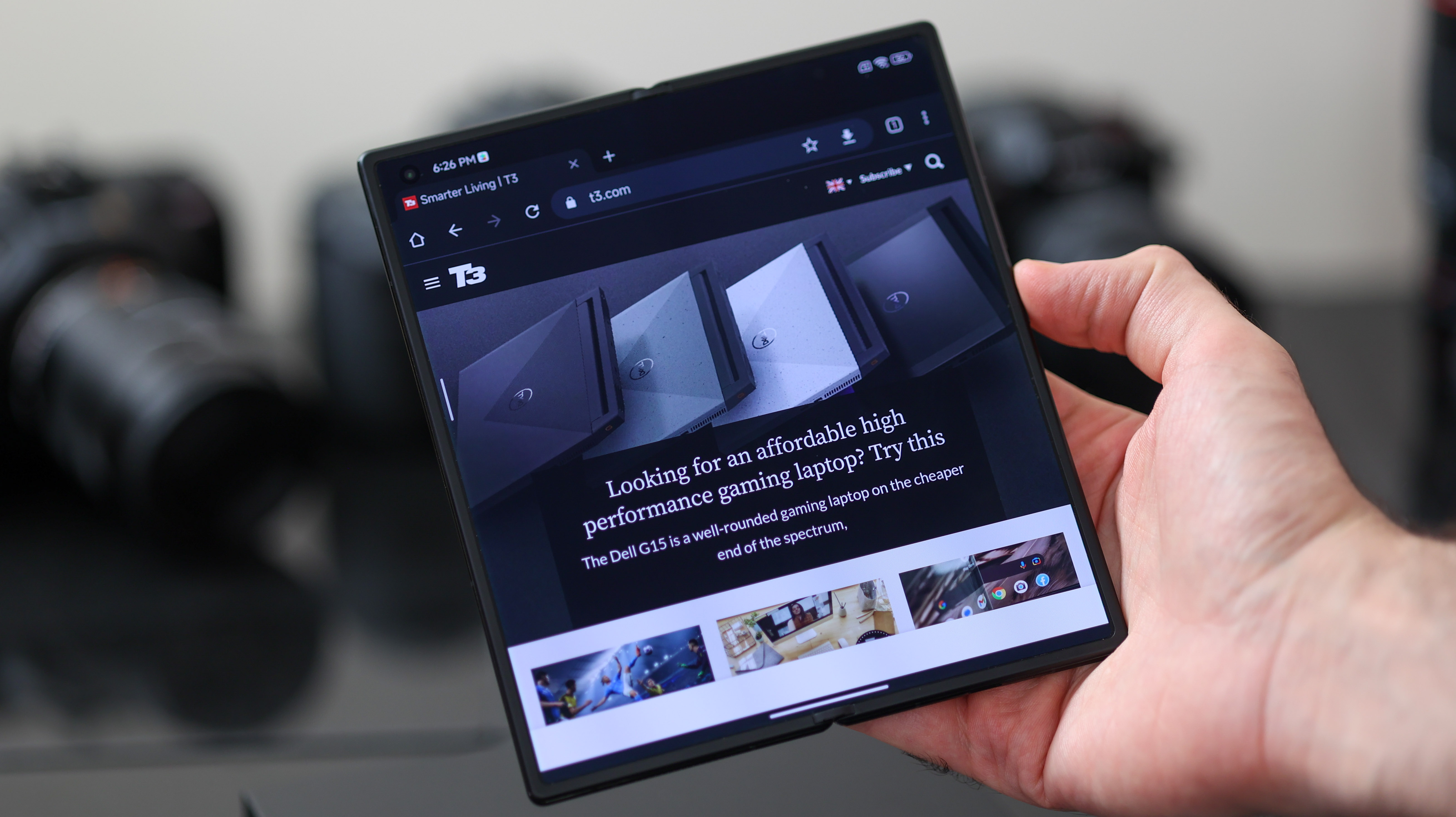

The Samsung Galaxy Z Fold 5 also supports an S Pen for big-screen notetaking and doodling – another highlight missing from the Mix Fold 3. And if you plug it into a monitor or TV, you can also fire up DeX, Samsung's desktop interface. While other phone makers like Motorola have comparable features, Xiaomi doesn't.
Then there's durability. Yes, the Mix Fold 3 is tested to withstand 500,000 folds – impressive stuff – and the Z Fold 5 is only tested to 400,000 folds. But Samsung's foldable is IPX8 water resistant, while Xiaomi's doesn't have an Ingress Protection rating.
Finally – the part-folded experiences – Samsung once again takes it home. Half-fold the Z Fold 5, and you'll be prompted to push an app into the top half of the screen and choose handy tools to display in the bottom half. In my time with the Mix Fold 3 thus far, the only apps part-folded optimisation worked for are the camera and native video player app, cementing Samsung's lead when it comes to software.
It's also worth noting that while the Mix Fold 3's hinge is easier to open and close, and its screen is significantly less bumpy along the crease line, the Z Fold 5's hinge is much more secure throughout the range of motion. This gives Samsung's foldable extra solid factor for added peace of mind.
5. Foldables – the story so far

No foldable – especially large, book-style foldable – has nailed it across the board yet. For starters, they're all prohibitively expensive. It's also a challenge that some of the best options, like the Honor V2, Mix Fold 3 and Oppo Find N2 are only available in China. And it's difficult to stomach their high prices when they all make serious compromises with their cameras and/or cover screens.
The Xiaomi Mix Fold 3 is one of the best around when it comes to being an all-around two-in-one. Brilliant to use as a typical smartphone thanks to its comfortable front screen, and it's also a powerful tablet when open. Add a versatile camera system to its talents, it would be a crying shame if Xiaomi didn't end up launching this triple threat in the West. After all, Samsung still doesn't have much in the way of competition outside China.
So while the pace at which Samsung is pushing innovation in its Z Fold line could be quicker, I have to respect what the Korean giant has created: a great software experience and robust-feeling hardware, complete with water-resistance and stylus support. That's what a foldable should be like, for me anyway.
All these reasons and the lack of a confirmed launch in the West is why even with the Xiaomi Mix Fold 3 schooling the Galaxy Z Fold 5 in some key areas, I think that Samsung is still number one in the foldable charts – as you can see in T3's recently updated best folding phones buying guide – and likely will be for the foreseeable.

Basil has been writing about tech for over 12 years, with bylines in TechRadar, Metro, Wired, and Digital Camera World – to name but a few titles. He expertly covers everything from mobile phones to smart devices, cameras, audio-visual hardware, and kitchen tech. In addition to his extensive journalism experience, Basil is also skilled in video production, content strategy, and vegan baking, and runs Tech[edit], a technology-focused YouTube channel.